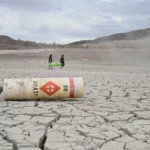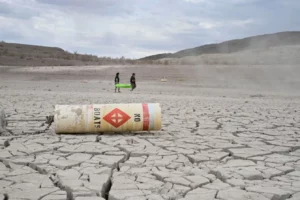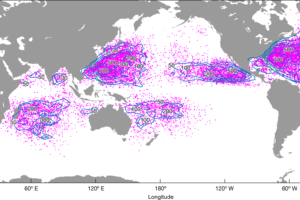Establishing dedicated climate change units by all state entities — ministries, agencies and departments, including county governments— in their organisational structures is a legal obligation.
Section 15 (5) (c) of the 2016 Climate Change Act calls on all public entities to ‘designate a unit with adequate staff and financial resources and appoint a senior officer as head of the unit to coordinate the mainstreaming of climate change action plan and statutory functions and mandates into sectoral strategies for implementation’.
Over the years, the Ministry of Environment, Climate Change and Forestry has observed growing compliance with this requirement, which is critical in addressing Kenya’s increasing vulnerability to the worsening climate crisis.
As a ministry, we are encouraged by the positive development and urge public agencies that are yet to comply with the legal requirement to do so as part of collective government action against climate change.
In the spirit of the ‘whole-of-society, whole-of-government’ approach to service delivery adopted by the Kenya Kwanza administration, we urge the private sector to take cues from the government and establish dedicated climate change units within their ranks.
Establishing the units is a good step towards fast tracking the rollout of programmes that address Kenya’s broad climate action agenda as outlined in the third National Climate Action Plan, Kenya Kwanza administration’s Bottom-up Economic Transformation Agenda (BETA) and the 2010 Constitution among other policy frameworks.
Climate change is worsening the economy, causing an estimated five per cent annual GDP loss, with agriculture, food security, health and water being the most affected.
According to the World Meteorological Organization (WMO), the last seven years have been the warmest since 2015, with a global average temperature rise of 1.1°C since pre-industrial times.
The WMO has declared 2023 the warmest year, with February 2024 being the hottest ever. The Intergovernmental Panel on Climate Change 6th Assessment Report highlighted the projected increase in global average temperatures and greenhouse gas concentrations, leading to dire consequences, particularly for vulnerable communities. Floods, droughts and rising temperatures have affected all sectors of the economy, leading to the destruction of critical infrastructure, displacements, insecurity, the emergence of vector-borne diseases and wildlife deaths.
Given the worsening crisis, the ministry has adopted a ‘whole-of-government, whole of society’ approach to ensure that climate risks are adequately integrated into the government’s planning, strategies, policies, decisions and implementation.
The Climate Change Directorate in the State Department of Environment and Climate Change is available to assist entities, including the private sector, that are yet to mainstream climate action in their operations, to comply.
Despite our country’s high vulnerability, Kenya remains at the forefront of addressing climate change within her unique national circumstances. We have established and continually strengthened a conducive policy and legal environment for all stakeholders to have adequate space to address climate change.
Kenya has submitted its updated Nationally Determined Contribution (NDC) with an increased ambition of 32 per cent from the 30 per cent emission reduction target. It has finalised its Long Term Low Gas Emission Development Strategy up to 2050, outlining long-term ambitions towards a net zero target. Last year, the country successfully amended the Climate Change Act to include carbon markets, one of the innovative mechanisms for enhancing green climate finance.
Kenya is similarly committed to progressively implementing several other global and regional commitments with interconnected goals of contributing towards a sustainable development world with low carbon climate resilient development. These efforts include the restoration of 5.1 million Hectares of degraded landscapes under the 2015 five-year African Forests Landscape Restoration initiative and achieving Land Degradation Neutrality by 2030 under the United Nations Convention to Combat Desertification.
Given this, Kenya has committed to restoring and conserving 10.6 million hectares of degraded landscapes and ecosystems and growing 15 billion trees by 2032. This key deliverable for the ministry is hinged on BETA. The strategy is based on the ‘all hands on deck principle’ that calls for the participation and contribution of all government agencies at national and county levels, the private sector, non-state actors and all citizens. This will create more champions and marshal all stakeholders to attain achieve the goal.
Addressing climate action requires adequate and predictable financial resources, which has been a significant bottleneck for Kenya and many other developing countries. For instance, implementing our updated NDC requires an estimated USD 62 billion, of which 87 per cent should come from international support.
Kenya’s Long Term Strategy (LTS) is estimated to cost USD 170 billion.
The government collaborates with development partners to develop projects and programmes that are aligned with the NDC and LTS. One of the forerunner initiatives is the Financing Locally Led Climate Action (FLLoCA) programme, whose objective is to deliver locally-led climate resilience actions and strengthen national and county governments’ capacity to manage climate risks.
Focusing on the local level resonates well with BETA. Apart from delivering the much-needed resources to the regional level, FLLoCA is also supporting the strengthening of climate change units in state agencies to enable them to effectively support counties in delivering on their climate action.
Source: Nation











Add Comment